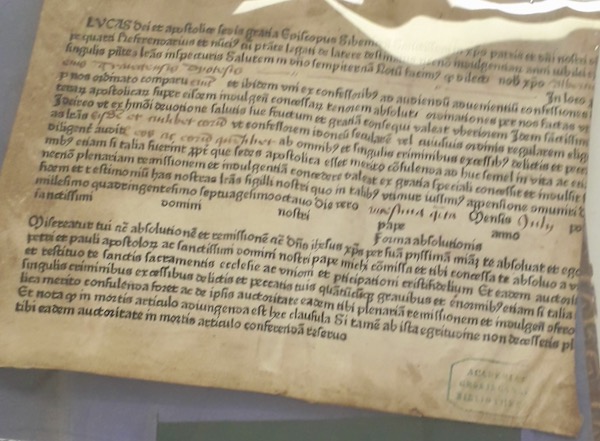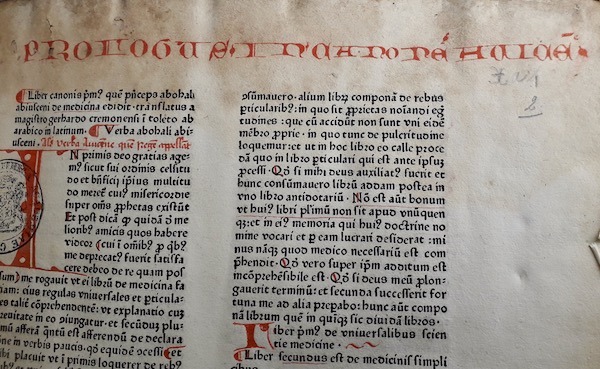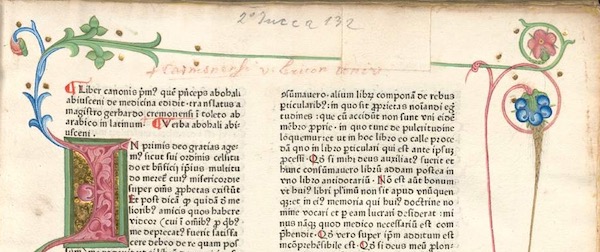The incunabula at the University of Groningen Library
The term ‘incunabula’ probably doesn’t immediately conjure up thoughts of a university library – at least, it didn’t for me. However, incunabula – books printed before 1501 – are among the University of Groningen Library’s most valuable treasures. The term comes from the Latin word incunabulum, which means cradle, a metaphorical reference to something’s early beginnings. It is an apt term, as this category of printed works refers to printed books from the earliest stage of typography in Europe.
To give you a better understanding of what incunabula are, I will briefly explain the production process. The printer would print several pages of text on a single large sheet, which was then folded in such a way that the pages were in the correct order. The result was called a quire. An entire book usually consisted of more than one quire. A customer would buy the loose quires and have them bound together after purchase. Buyers could choose to bind the incunabulum (made up of several quires) either individually or together with other incunabula in a convolute. Convolutes could consist of incunabula from different authors, printers and printing years and on different subjects.
But incunabula are more than just words on paper. The words or texts are inextricably linked to the materials on which they were printed, which we call text carriers. Incunabula are also characterized by paratextual elements. These are elements that accompany the text, such as the title and author’s name, the table of contents, illustrations and typefaces.
What I find extraordinary about incunabula is their immense diversity. You might think that incunabula lacked diversity, or at the very least were less varied than handwritten books. Firstly, this is because there were only two text carriers that were both mass produced and suitable for the printing process: parchment and paper. Non-printed texts, on the other hand, are also found on other materials, such as papyrus and stone. Secondly, printing made it possible for one printer to produce dozens of copies of an edition of a work in a short period of time, whereas manuscripts often had significant differences in paratextual and other elements. As a result, even though the text was the same, no handwritten work was the same. In part, this was because manuscripts were produced by different scribes, in different places and at different times.
However, I will show that any assumed lack of diversity among incunabula is very far from the truth. The University Library’s incunabula collection is in fact highly diverse. Although the only available text carriers were parchment and paper, their form could vary. Indeed, incunabula come in many different formats. The University Library has two huge volumes of the collected medical works of the Arab scholar Avicenna (980-1037), printed by Adolf Rusch in Strasbourg before 1473. Each volume contains several hundred pages, considerably larger than the book format that we have today. By contrast, photo 1 shows an incunabulum comprising a single folium (or leaf) – an indulgence for the Holy Year 1475.
But the diversity of the University of Groningen Library collection goes much further than that. There is sometimes a wide variety of paratextual elements in works from the same printer and year. We see this if we compare the Groningen copy of Avicenna’s medical work printed by Adolf Rusch (ca.1435-1489) with the copy of the same edition held by the Bavarian State Library. Photo 2 shows an excerpt from the first page of the Groningen copy and Photo 3 the very same page in a copy of the Bavarian State Library.
So, incunabula can be highly diverse, but where does this diversity come from? This will be the subject of a new blog! For the time being, I can at least conclude that the incunabula collection in Groningen constitues a treasure trove of diversity that will take me on a new adventure each week through the world of early typography.




